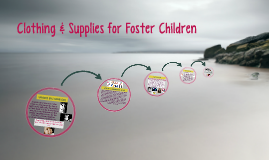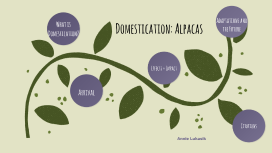alpaca
Transcript: To efficiently farm alpacas you need to keep grass healthy and green so you can run more alpacas on the land, having paddocks on rotation is also a good idea. Feeding is relativly easy but you need to make sure there is some hay if they don't have grass to eat but try to make sure they do have grass to eat. You can easily handle alpacas but you just have to be careful that you don't injure them. You can run them anywhere you like even on steep hills which you can't run animals like sheep on which means when you choose where you are going to put your alpacas you can think more about shelter and abundance of food. Alpacas respect their environment so make sure you respect it too. Clipping alpacas feet is essential but the most important thing is to protect your herd from diseases. diseases, clipping and shearing Alpacas 1.Primary industries and resources SA 2002, ‘alpaca-management and health’, fact sheet, January, viewed_12/08/11, ‹www.pir.sa.gov.au/__data/assets/pdf_file/0009/37773/Alpaca_Management.pdf›. 2.Australian alpaca 2011, accessed 05/08/11, ‹www.alpaca.asn.au/›. 3.alpaca pastures 2011, accessed 12/08/11, ‹www.alpacapasturesva.com/our farm› 4.Gateway farm alpacas, pasture and paddock design 2011, accessed 12/08/11, ‹www.gatewayalpacas.com/alpacas/care-and-shelter/pasture-layout.htm›. 5.Herd management 2011, accessed 05/08/11, ‹www.pinjarraalpacas.com/manage.php›. 6.1996, ‘alpaca studs big buy’, Stock Journal, May 16, pp. -. 7.Nigel Austin, ‘The $200,000 blueblood from Peru’, The Advertiser, p. 8.Burgis brook alpacas, ‘Alpaca facts’, Burgis brook alpacas, pp. 1-7. shearing There are quite a few diseases that can effect sheep these inclued: Big bale eye, Blue tongue and CPD. Many of these diseases can be contagious and or deadly. Most of these can be prevented by vaccinations and can be treated. Alpaca fibre is not wool it is a fibre which is much softer and more expensive than sheeps wool. Alpaca fibre is used in gloves jumpers and sometimes even socks. When alpacas get older and their fleece gets courser you can use it in felt, instead of its normal wool like form, this can be used as a thin matt or it can be patterned and be used as decoration a bit like a painting. Stud male alpacas can cost a lot of money so if you manage to breed lots of them you can make a ton of cash, a few stud male alpacas have sold for over $200,000. So alpaca farming can be very profitable. Diseases Enviromental impact thank you To shear a sheep you need to be very skilled to get the all the wool and to get it done properly (like alpaca shearing) but basically you just need to have to have the sheep lying down and you have to get under the wool and let it fall off. Alpacas need their claws on their feet clipping annually because they become over grown, ugly and can even get in the way if they get too over grown and curly. Male alpacas also need their fighting teeth trimmed from when they are three years old and from then on they need to be trimmed annually so they don't injure each other. Alpacas Alpacas Alpacas You can only run four to six sheep on one acre of land and that is a lot less than alpacas. Sheep also need plenty of shelter like a protective shed or a barn Sheep The end product When sheep eat they don't just bite their food they rip it up out of the ground and just leave a small patch of mud. Sheep also have hard hooves which damage the ground and rip it up when they are walking. feeding Handeling and Transport Sheep can be moved in trailors, vans and trucks and they just need to be secured and tied up. sheep are relatively easy to handle they can just be a bit stubborn sometimes. Diseases Sheep Bibliography Alpacas don't cause much damage to their environment. They bite off the top of grass so it can grow back. They have padded feet so they don't do much damage when they are walking along the ground and they all poo in the same area so the whole paddock isn't covered so more food can grow. The reason alpacas are good at looking after their immediate environment is because they were originally from the Andes mountains where there was very little food so they had to preserve what there was. All this means you don't have to maintain as much food as you do for sheep Alpacas clipping Alpacas can be affected by quite a few diseases which inclued: Rabies, foot and mouth disease, west nile virus, bovine viral diarrhea virus and EPE. Some of these diseases are highly contagiouse and should be treated with care. Most of these can be prevented with vaccinations but not all the vaccinations are approved for alpacas. If one of your alpacas has one of these diseases you should get a vet to have a look at them but the most important thing is that you are careful. Shearing paddocks Alpaca management Efficient farming of alpacas Alpacas are easy to handle and will mostly do what you want them to do. They are also easy to herd in large groups but they sometimes don't get pleased when you move them. If you need to move them they

















